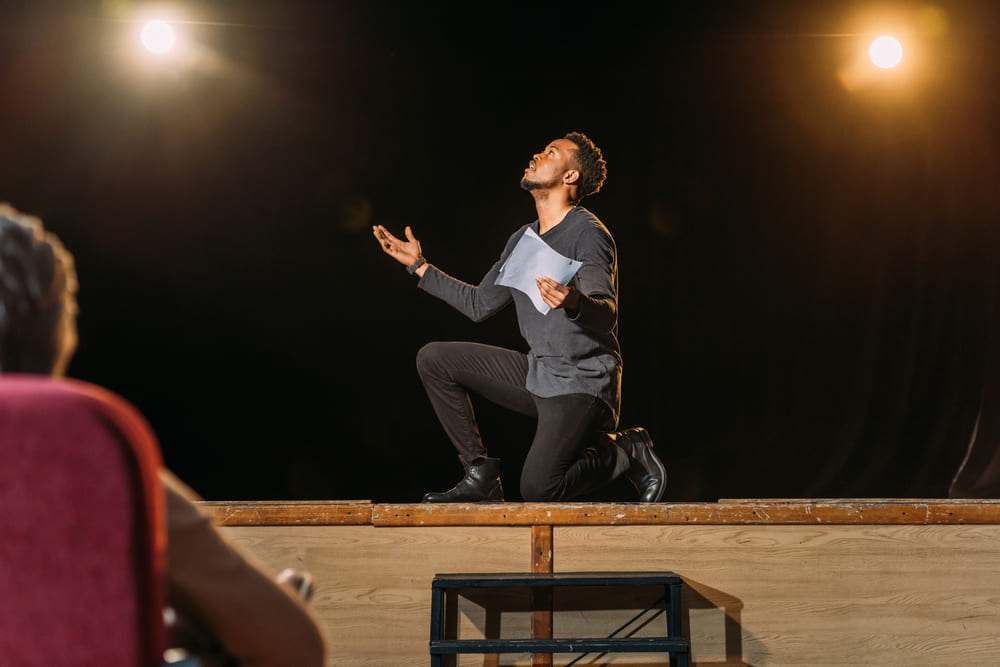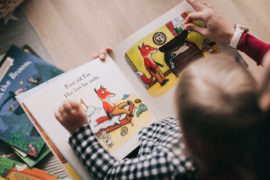When it comes to learning acting, there are various types of acting. There are plenty of actors with little to no professional training. It seems effortless when you see your favourite actors and actresses in movies or on television, isn’t it? However, in practice, the process requires a lot of effort and instruction. Because of this, charisma is only so effective. Here are some types of acting methods that you’ll learn if you or your child is thinking about pursuing the profession.
Mugafi Ved – AI Storywriting tool
In this guide, we’ll discuss the most common types of acting techniques and how they can help further your career as an actor.
- Classical Acting
The Classical Acting Method, one of the oldest types of acting, which was founded on Shakespearean acting skills, was developed and made popular by Konstantin Stanislavski and Michel Saint-Denis in the late 1800s. It’s a wide-ranging strategy that calls for performers to thoroughly read the script in order to understand the character in depth, develop personal ties to the role, and use those ties to deliver a compelling portrayal.
Mugafi Ved – AI copilot for writers
In order to ensure that everyone in the theatre, especially those in the extreme back, could hear and see, classical acting places a strong emphasis on unnecessarily theatrical gestures, exaggerated actions, and slower, drawn-out speaking. Little to no ad-libbing or improvisation is taught because it often keeps to the dialogue and actions verbatim from the script.
It is practically never taught for screen acting because many contemporary acting teachers think classical acting is a little “over the top.” It is largely utilized as an introduction training technique to assist novice actors in discovering themselves, their movement, and their bodies as they pick up the fundamentals of stage acting.
- Chekhov Acting Technique
The Stanislavski System was refined by Michael Chekhov, a student of Stanislavski, who also added his own insights and theories. This resulted in the development of the Chekhov Method, which sprang to fame in the 1950s.
The Chekhov Method is regarded as a “psycho-physical” method in which one must combine inside impulses and sentiments with outward gestures and actions.
The actor must use facial emotions and outward gestures to physically “convey” the character’s internal state. To avoid appearing “too huge” or theatrical, these outward movements must then be quietly hidden.
- Stanislavski’s System
Among the various types of acting, this system is often referred to as Modern Acting. The development of film had a significant impact on Stanislavski’s training methods. His classically trained actors’ performances appeared to be over the top when he saw how they appeared on TV. As a result, he modified his strategy and created what is now known as Stanislavski’s System.
With the help of Stanislavski’s System, actors can better access their subconscious thoughts and deliver more organic performances in theatre and film by combining improvisational and classical acting skills. When preparing for a role, the method mandates that performers ask themselves the following seven questions.
Who am I?
Where am I?
When is it?
What do I want?
Why do I want it?
How will I get it?
What do I need to overcome?
| Read more: How to Become an Actor With No Acting Experience |
- Method Acting
The Lee Strasberg-created Method Acting approach, one of the most well-known types of acting today, was influenced by the Stanislavski method. Once more, the goal is to make the performance as emotionally authentic as possible. Actors are instructed on how to recollect a potent emotion from their past by drawing on their personal experiences.
By utilizing personal memories to evoke real emotions, method acting enables an actor to actually bring a character to life. Some Method Actors even spend a few weeks in character before the performance and don’t break character until the play is finished!
Method actors thoroughly engross themselves in the mind of the character they are playing by thinking as the character would think, behaving as they would, and feeling as they would. This allows them to live the life of the character not only physically but also emotionally and cognitively.
The fact that certain actors who employ Method Acting can be challenging to direct and work with on set can be detrimental to their careers (especially if they’re young actors), which is one negative of the technique.
The screen is where Method Acting works best since it can magnify even the smallest movements, like an eyebrow being raised, so that everyone can see them.
- Spolin Method
Viola Spolin introduced her theatre acting method in Chicago at the beginning of the 1950s. She was renowned for developing theatre games that would let actors use improvisation and make decisions on the spot to produce unique and compelling performances.
Being the first acting instructor to do so, she stressed to her students the need to interact with the audience during performances in order to “create magic.” Since this style encourages spontaneity and improvisation, no two performances are ever exactly the same.
To do this, she came up with the concept of combining exercises and games that would teach the actors how to respond naturally to unplanned shifts. In reality, the use of this technique enabled interaction between the actors and the audience, improving the audience’s ability to relate to the character.
- Practical Aesthetics Method
It is one of the most practical types of acting methods. William H. Macy and David Mamet used inspirations from Stanislavski and Meisner to create the Practical Aesthetics Method. Using a four-step examination enables actors to incorporate aspects of themselves into a character, giving each one a distinct personality. In a way, it enables the actor to showcase aspects of their individual brand in each character they play by posing queries like, “If I were in this scenario, what would I do?” and “How is this circumstance similar to something I’ve encountered in my own life?”
Here are the four steps of analysis used-
- The “Literal” Analysis–
The most important and straightforward summary of what is happening. What genuinely occurs for your character in this scene? For instance, “My character is sobbing literally when her father dies.”
- The “Want” Analysis-
In the end, what does one character want the other to say or do. “What does the other character in the situation desire from my character?” For instance: “I want the other character to understand that I am broke.”
- The “Essential Action” Analysis-
Third, you must determine your role in the scene—not that of the character. Are you begging for assistance? Considering a strike? Seeking pardon from? What is the essential action?
- The “As If” Analysis-
The last step is to determine how this circumstance is comparable to something you have experienced (or may encounter) in your own life. This circumstance is practical, “almost as if…”
For example- you are acting in a scene where you are really happy and jumping out of happiness. The “As If” analysis could be that the scene is “as if” you have won a one-crore lottery.
According to practical aesthetics training, it is ideal to act out the scene as you would if you were put in that situation because it is impossible to totally embody the thinking and emotions of another person (character).
| Read more: Acting Guide: What is Method Acting All About? |
- Meisner Technique
A training method known as the Meisner Technique trains actors to react to stimuli by following their innate impulses. Meisner actors are simply expected to react in a natural way without overthinking outside cues in a scenario, rather than delving deeply into sense memory and making decisions in advance for every moment (or “beat”) in action.
This method was created by Sanford Meisner to aid performers in escaping their own thoughts and refraining from overanalyzing their roles. Because it was so simple and needed so little effort to “act,” the method was seen as ground-breaking.
There are three main principles of the Meisner Technique:
Emotional Preparation –
As with any acting technique, there is preparation work that requires research and judgment. Your performance will be more authentic to the character if you develop a backstory for them and make decisions about them before the scene starts. The only catch is that these choices are only available up until the beginning of the scenario. Everything that happens after that must occur immediately since the Meisner Technique is designed to be totally reactive.
Repetition–
Meisner used repetition in the form of word games, in which each actor repeatedly repeated the same sentence while using a different emotional tone in reaction to how the actor across from them had said it. You’re wearing a headdress, the first actor would say, and the second would reply, “I’m wearing a headdress.” With slight variations in tone and accent, this would keep repeating itself.
Improvisation –
Since the Meisner Technique relies so heavily on reaction and instinct, improv forms the basis of practically all actor performances (except for the actual words and the choices they make before the scene starts).
These were some of the most famous types of acting. There are other types also, but the ultimate purpose of all types of acting is to present a story that will keep viewers interested, entertained, and engaged.
Excellent acting demands memorization, comprehension of the scene’s context, knowledge of your character, taking direction, and performing in such a way that the audience loses itself in the narrative and pays no attention to your acting.







